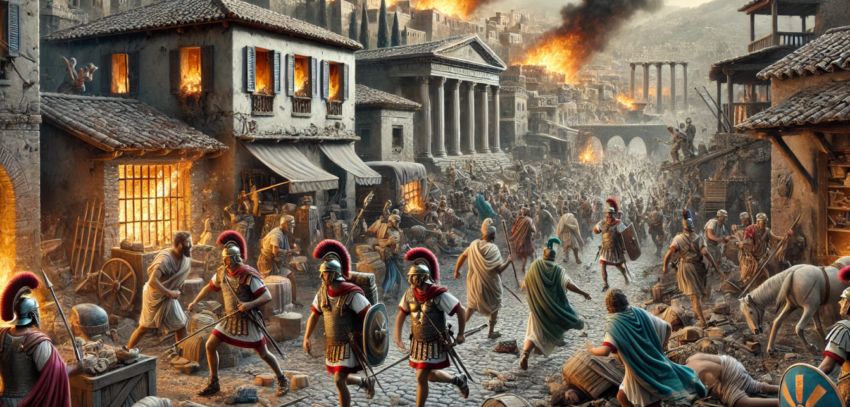Siege of Carthage
The Siege of Carthage, the centerpiece of the Third Punic War, was a brutal and drawn-out conflict that ultimately led to the complete destruction of the city. The siege began in 149 BCE when the Roman forces, commanded by consuls Manius Manilius and Lucius Marcius Censorinus, landed in Africa and began their assault. The Carthaginians, aware of the existential threat they faced, fortified their city and prepared for a protracted defense.
The initial phase of the siege saw the Romans attempting to breach the formidable walls of Carthage. The Carthaginians, under the leadership of generals such as Hasdrubal, mounted a fierce resistance. They utilized their knowledge of the terrain and their defensive structures to repel Roman attacks. The city’s walls, standing over 30 feet high and supported by multiple towers, presented a significant challenge to the besieging forces.
In addition to the strong fortifications, the Carthaginians employed a variety of defensive tactics. They launched sorties to disrupt the Roman siege works and used fire ships to attack the Roman fleet blockading the harbor. These efforts, combined with the resilience of the Carthaginian soldiers and citizens, managed to hold off the Romans for an extended period.
Despite their tenacity, the Carthaginians were gradually worn down by the relentless Roman assault. The Romans, under the new leadership of Scipio Aemilianus, who took command in 147 BCE, intensified their efforts. Scipio reorganized the Roman forces, improved logistics, and tightened the blockade around Carthage. He also initiated a series of strategic attacks designed to weaken the city’s defenses systematically.
One of the turning points in the siege was the capture of the Carthaginian outer harbor, known as the Cothon. This victory allowed the Romans to cut off one of the main supply routes into the city, further tightening the noose around Carthage. The Romans then focused on breaching the inner harbor and the city’s walls.
The final assault on Carthage began in the spring of 146 BCE. After a prolonged bombardment and numerous skirmishes, the Romans managed to breach the city’s defenses. What followed was a horrific and bloody battle as the Roman soldiers fought their way through the streets of Carthage. The Carthaginians, though outnumbered and outgunned, continued to resist fiercely, engaging in brutal house-to-house combat.
The fall of Carthage was marked by widespread destruction and slaughter. The Romans set fire to the city, and the flames consumed buildings, homes, and public spaces. The devastation was so complete that, according to some historical accounts, the city burned for days. The surviving Carthaginians, numbering in the thousands, were captured and sold into slavery. The once-great city of Carthage was reduced to ruins, its lands were sown with salt to ensure it could never rise again.
The Siege of Carthage stands as a testament to the lengths to which Rome was willing to go to eliminate its rival. It also highlights the resilience and determination of the Carthaginian people, who fought valiantly despite overwhelming odds. The destruction of Carthage marked the end of the Punic Wars and solidified Rome’s dominance over the western Mediterranean. It also served as a stark reminder of the brutal realities of ancient warfare and the devastating consequences of imperial ambition.
 |
 |
 |


